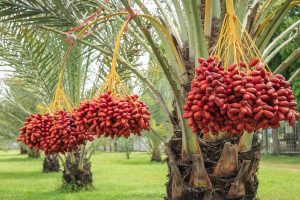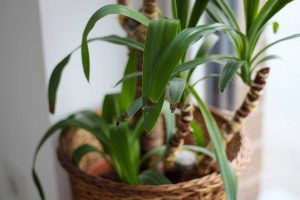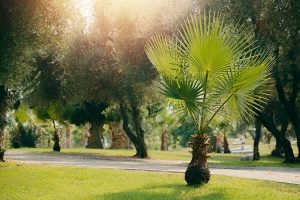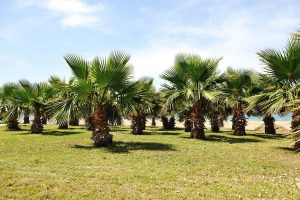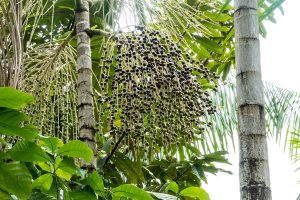Palm trees are hugely popular as both indoor and outdoor plants, adding a laid-back tropical feel to any space. Before you make the leap and buy one of these trees, you’ll first need to consider what type of palm is suitable for growing in your region and how much a palm tree is going to cost.
These trees can vary in price from around $10 right through to $2500. Here we assess the costs of different palm trees and explain what scenarios they would be best suited to.
Table of Contents
- Prices For Common Palm Tree Types
- Cat Palm (Chamaedorea Cataractarum)
- Pygmy Date Palm (Phoenix roebelenii)
- Jelly Palm (Butia capitata)
- Christmas Palm Tree (Adonidia merrillii)
- Bottle Palm Tree (Hyophorbe lagenicaulis)
- Coconut Palm (Cocos nucifera)
- Date Palm Tree (Phoenix dactylifera)
- Parlor Palm (Chamaedorea elegans)
- Kentia Palm (Howea forsteriana)
- Areca palm (Dypsis lutescens)
- What Affects Palm Tree Cost?
Prices For Common Palm Tree Types
Cat Palm (Chamaedorea Cataractarum)
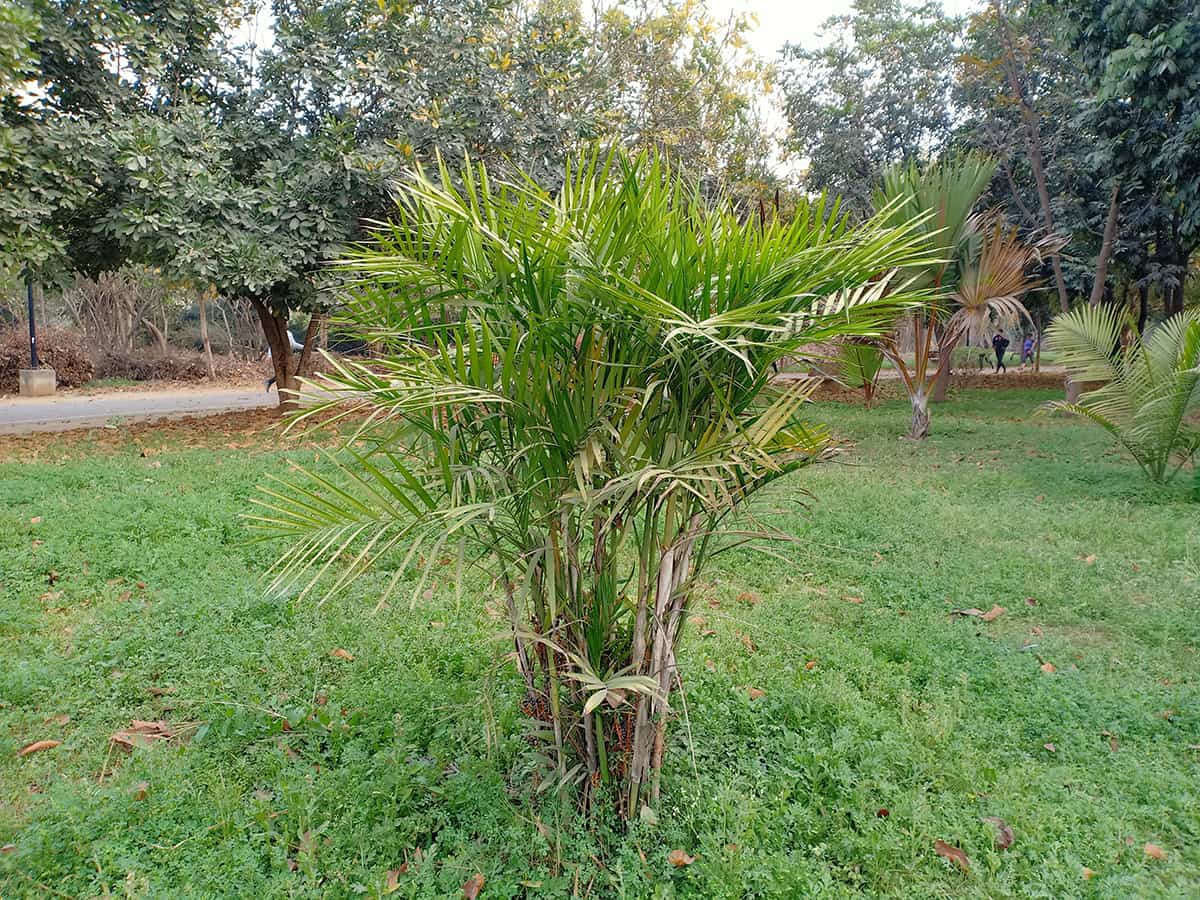
This is one of the smaller types of palm trees that will grow to around 6 feet when kept outside, or 3 feet if grown indoors. It does not have a trunk, instead the slim pinnate leaves fan out with a clumping habit that results in a dense and lush display of greenery.
An immature Cat Palm measuring around 2 feet in height will cost in the region of $70. For a fully grown outdoor Cat Palm, you can expect to pay up to $2000.
Pygmy Date Palm (Phoenix roebelenii)
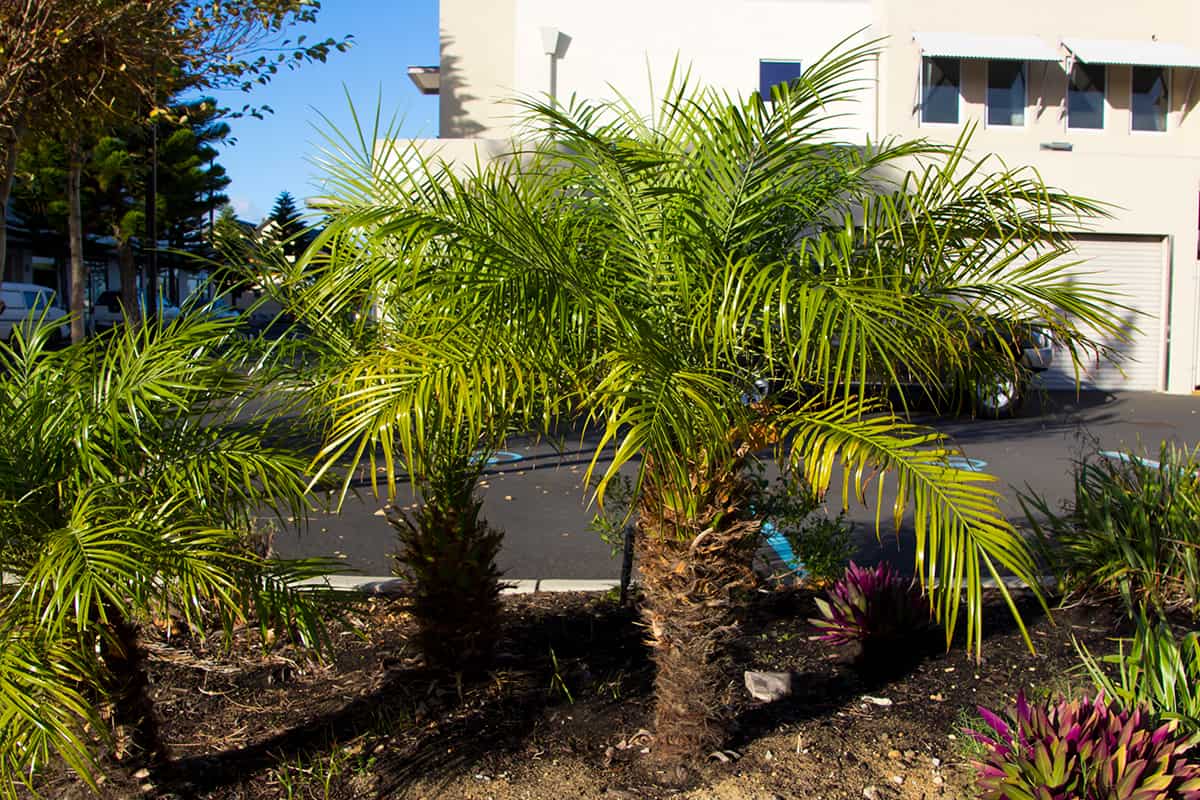
This is a miniature version of the Date Palm tree, which grows to a maximum of 10 feet. It produces date fruit, but these are not considered to be as enjoyable to eat as dates from large Date Palms. The smaller stature of this tree makes it ideal for a small tropical garden or a houseplant.
A 3 foot Pygmy Date Palm will cost around $200, while larger versions can exceed $1000.
Jelly Palm (Butia capitata)
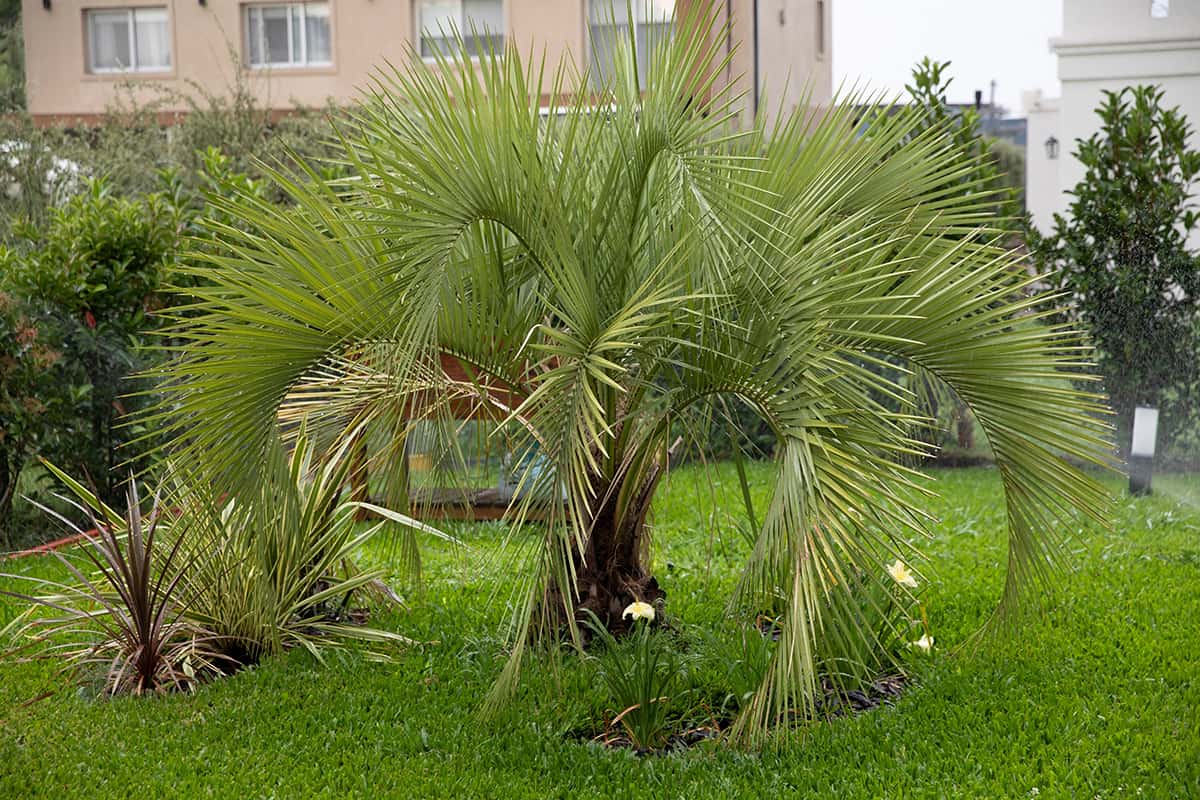
This tree is known as the Jelly Palm because it produces fruits which are commonly used to make jelly. It also goes by the name ‘Pindo Palm’. This is a smaller palm tree, reaching typical heights of around 25 feet, and it blooms with beautiful flowers in white, red, or yellow. It is cold hardy and also very tolerant of wet conditions, so it’s a good choice of palm tree for regions where the weather is mild.
The cost of a Jelly Palm can range from $60 to $600 depending on its size.
Christmas Palm Tree (Adonidia merrillii)
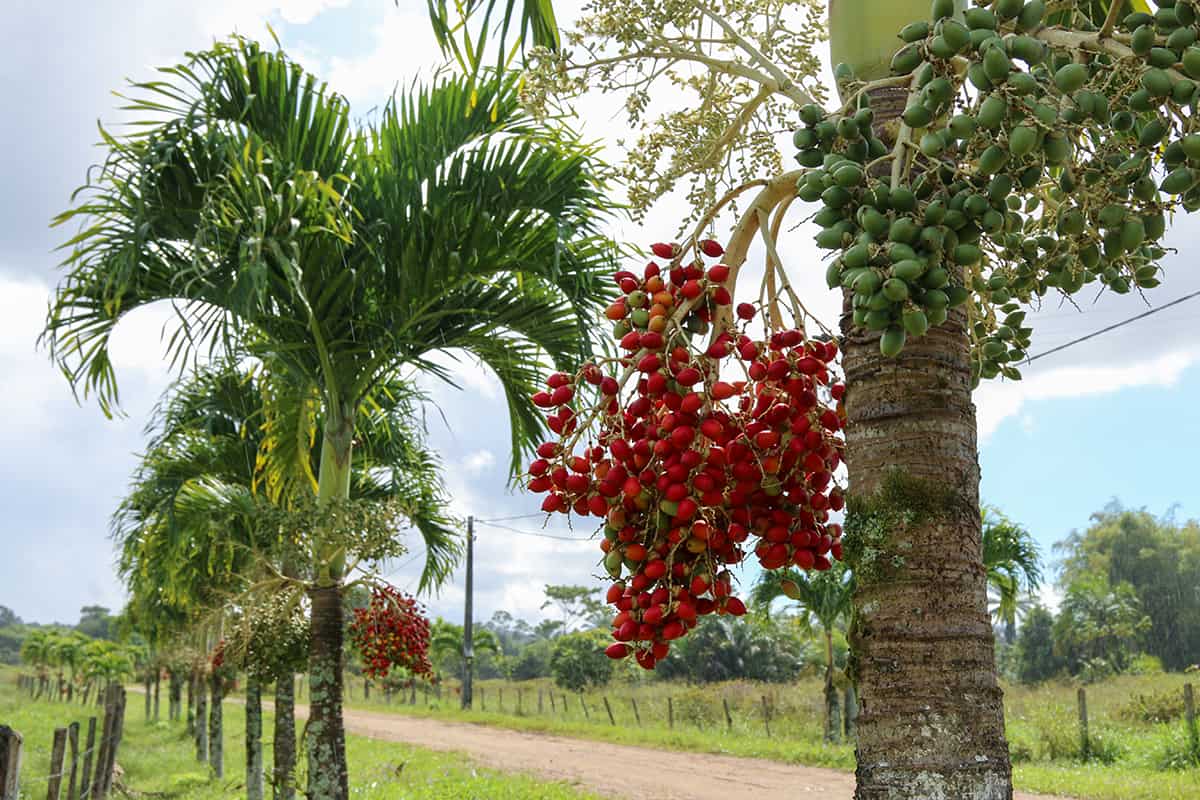
This palm tree is also known as the Manila Palm, and grows to between 15 and 25 feet in height at maturity. It is believed to be one of the most popular types of ornamental palm trees. They require a consistently hot climate when grown outdoors, and are appropriate for USDA hardiness zones 10 and 11.
Seedlings of Christmas Palms can be purchased for around $10, but for a Christmas Palm with a well developed root system you can expect to pay between $80 and $1500.
Bottle Palm Tree (Hyophorbe lagenicaulis)
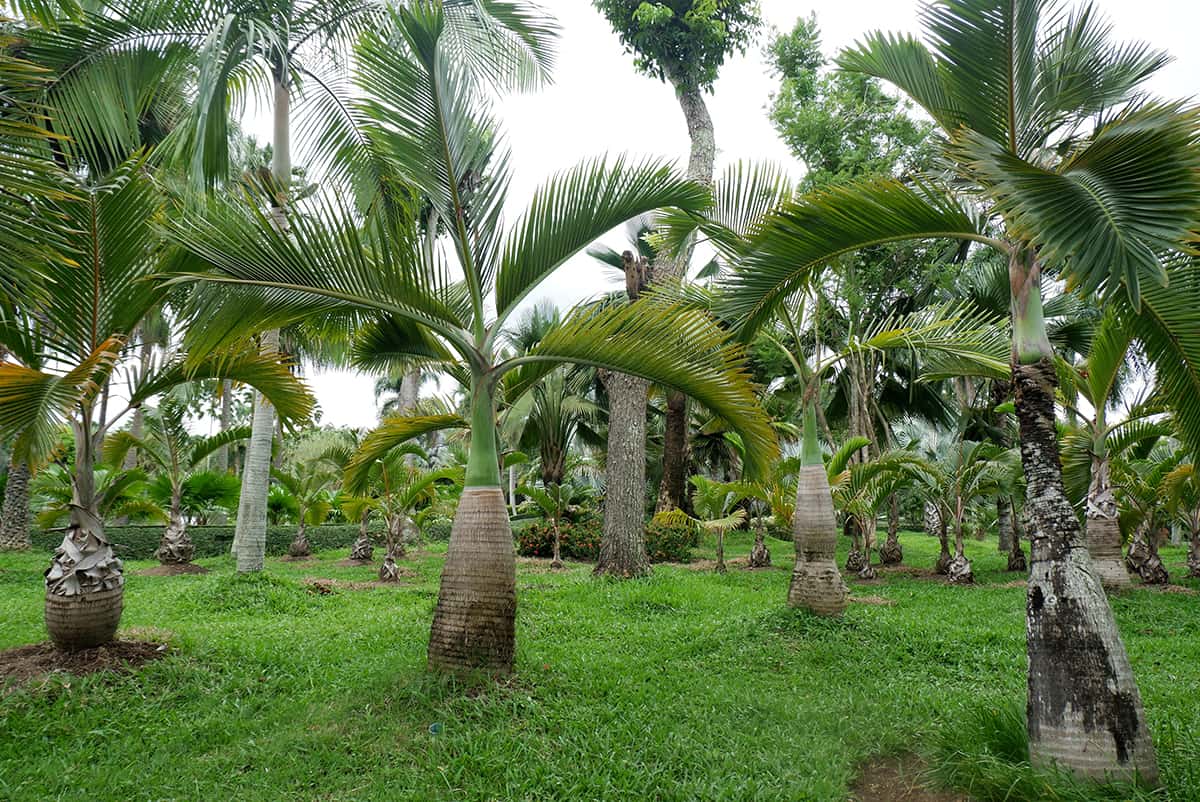
This is a dwarf type of palm that will grow to be no taller than 10 feet in height. They are named after their bottom-heavy trunks which resemble the shape of a longneck bottle. These palms make great houseplants or garden specimens.
A Bottle Palm at under 1 foot in height can be purchased for around $50, though when more mature you can expect to pay between $200 and $900.
Coconut Palm (Cocos nucifera)
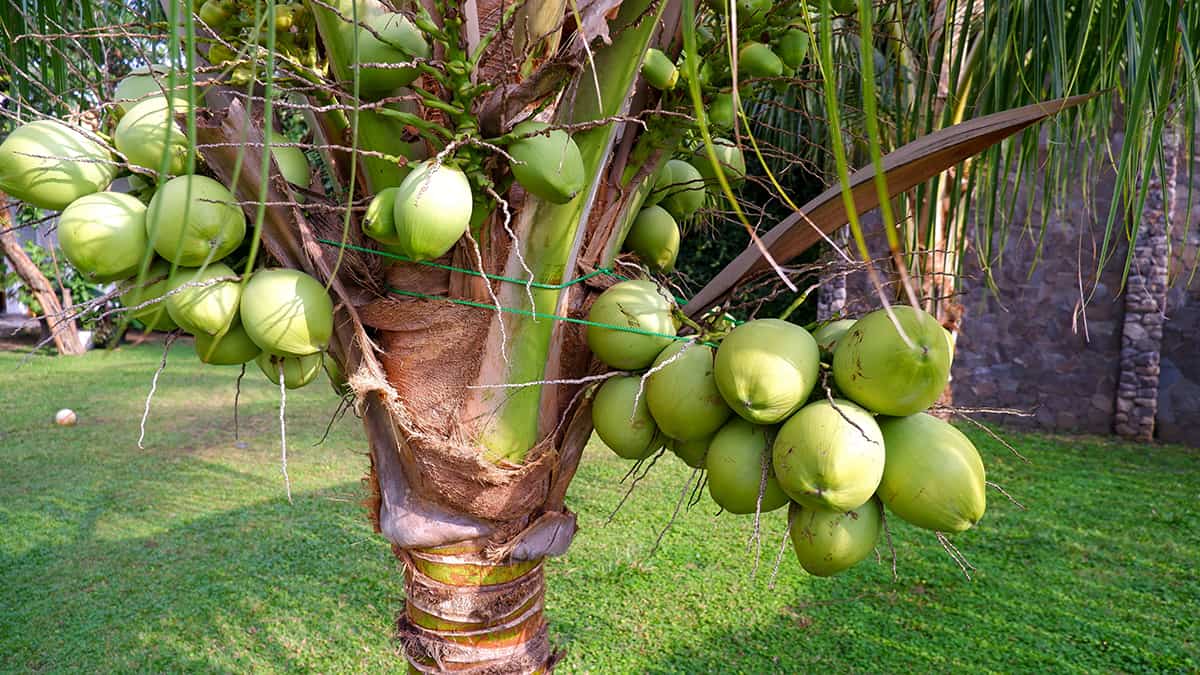
Coconut palms are the iconic palm trees you probably envision lining the edge of a golden sandy beach. These stunning trees reach heights of between 60 and 100 feet growing in their native habitats, and they have long life expectancies of around 100 years.
These trees are famed for their quintessentially tropical look, as well as the fact that they are widely cultivated for their fruits which are used for food, medicinal properties, and in beauty and cosmetics.
Coconut Palms are typically priced by height, with each foot of the tree costing around $75. This means a 5 foot tall tree would be $375, and a 10 foot tall tree would be $750.
Date Palm Tree (Phoenix dactylifera)
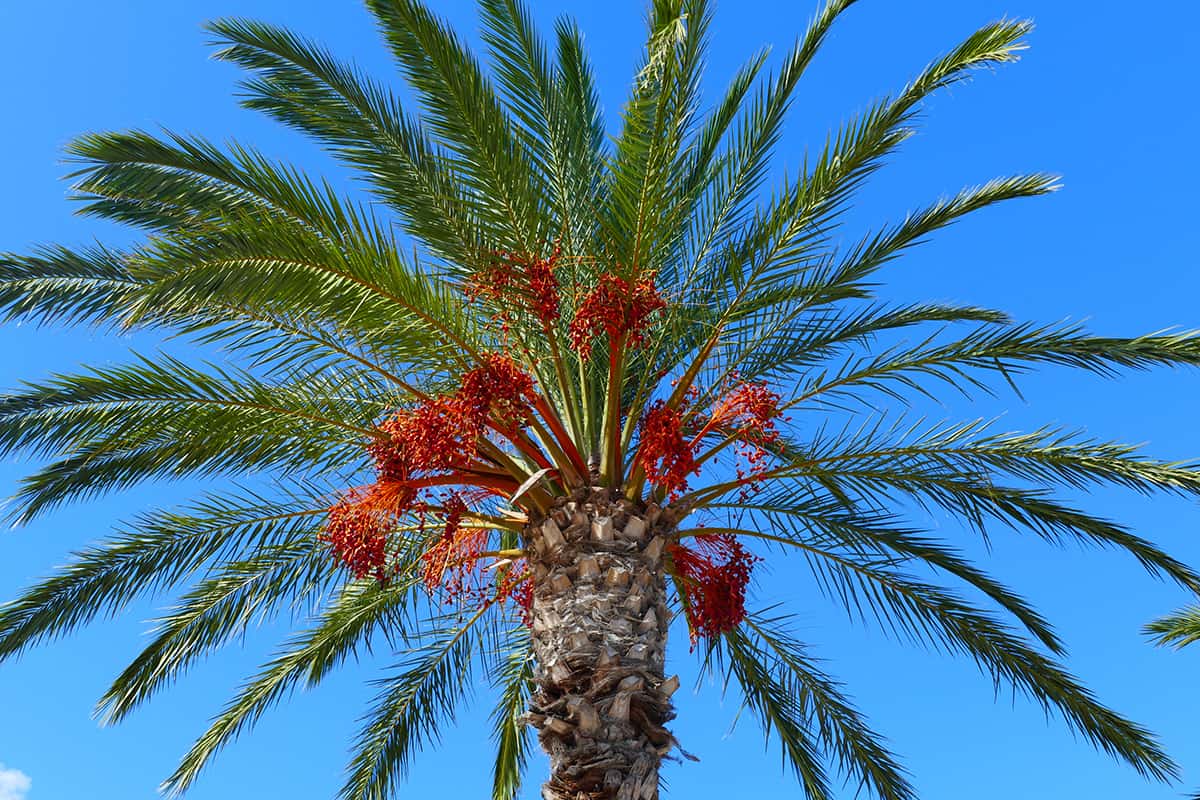
This tree produces the sticky and sweet date fruits which are typically orange or brown in color. The Date Palm tree can grow to heights of around 70 feet, with individual stems spanning lengths of between 12 and 20 feet.
A 3 foot tall Date Palm Tree will cost around $200. As they get taller, their price escalates.
Parlor Palm (Chamaedorea elegans)
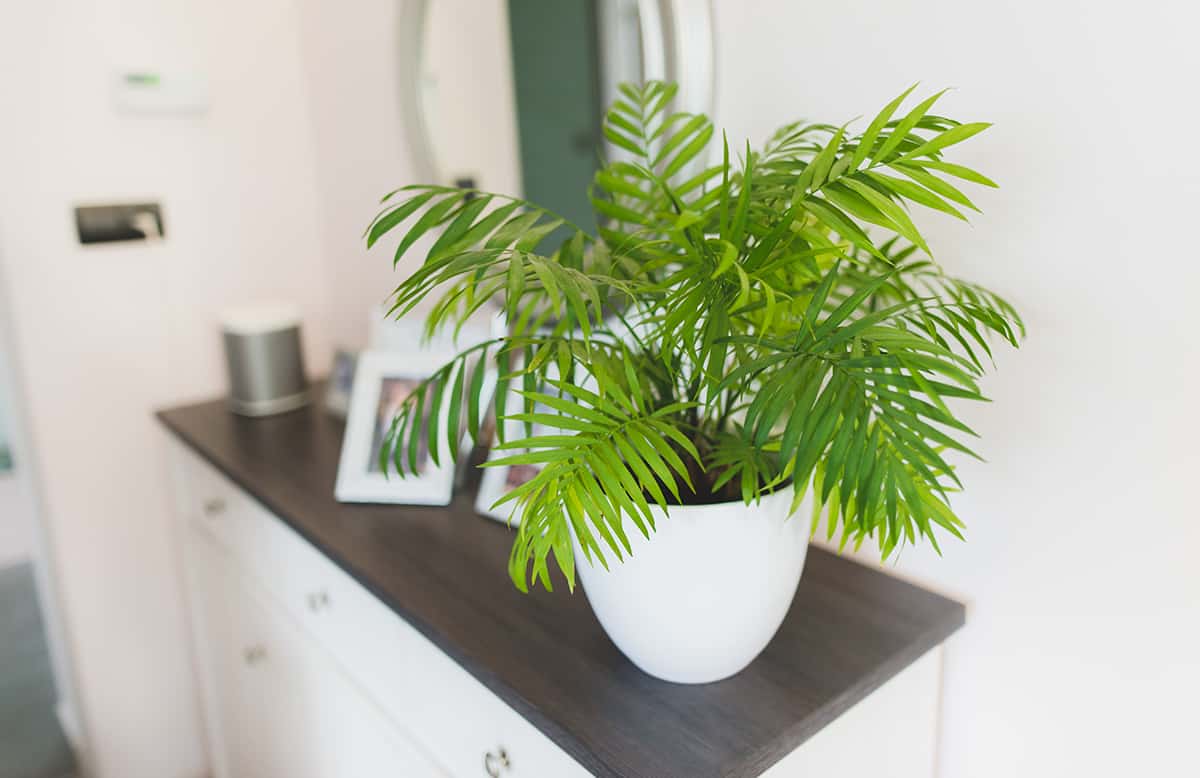
The Parlor Palm is so-called because it grows well in parlors that typically have low lighting. Outside, this tree grows to heights of just 9 feet, but they are commonly kept as houseplants because they are so low maintenance, and they bring a tropical feel to a room.
A 2 foot tall Parlor Palm will cost around $70.
Kentia Palm (Howea forsteriana)

This is a very slow growing type of palm which will usually only produce 1 or 2 new fronds each year. The fact that it takes such a long time to grow is the reason for its relatively high price compared to other similar palms like the Areca Palm. When grown outside, the Kentia Palm can reach heights of 40 feet, but inside they will rarely exceed 10 feet in height.
A Kentia Palm which is 3 to 4 feet tall will cost around $150.
Areca palm (Dypsis lutescens)
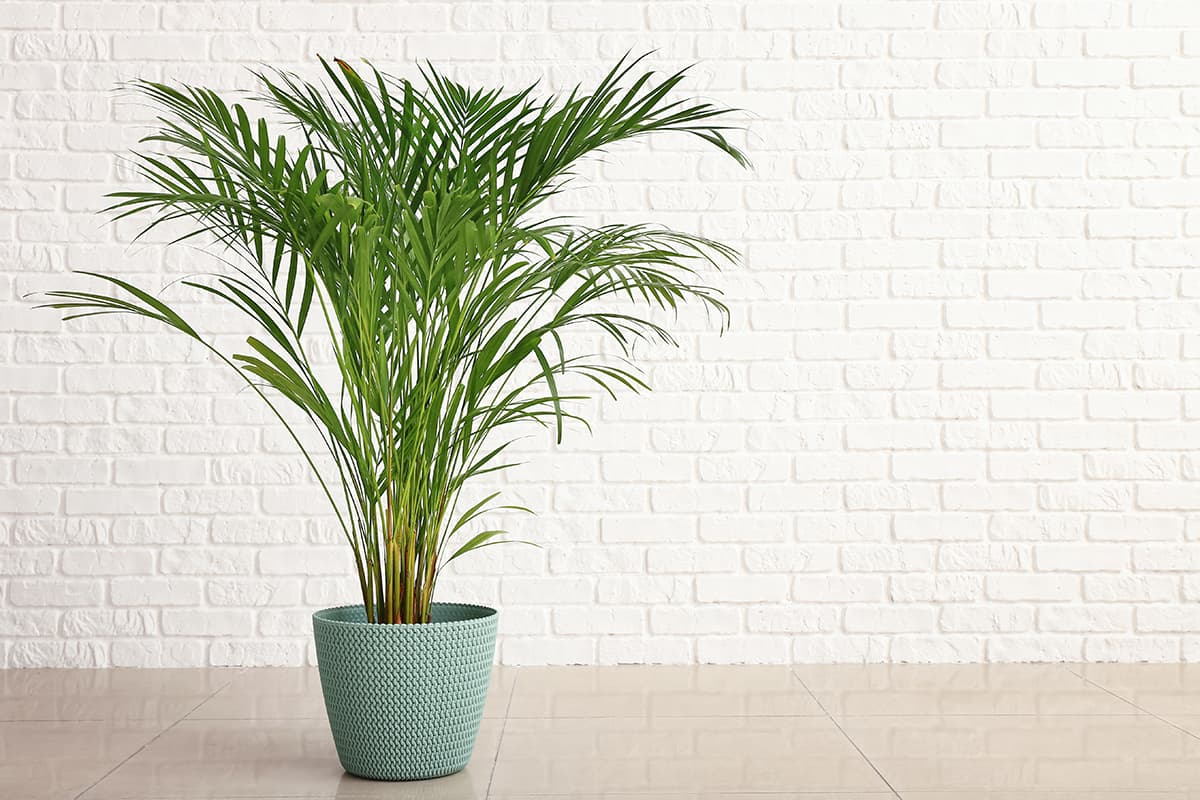
This is a hot climate palm which can grow to heights of around 30 feet outdoors, or 6 feet indoors. It is commonly kept as a houseplant in cooler climates, producing gently arching fronds of up to 3 feet in length.
An Areca Palm measuring 3 to 4 feet in height will cost around $100.
What Affects Palm Tree Cost?
Age and Size
The older, more mature, and bigger a Palm Tree is, the more it is going to cost. This is because the nursery where it has been grown will have had to house it, feed it, and care for it for a longer time, and therefore they need to recoup their costs.
Species
Some species of Palm cost more than others, and this will be down to a number of factors, including how rare the species is, its current desirability within the market, and its growth rate and, therefore, how much time a nursery has to put into it before it is saleable.
Condition
As with all plants and trees, the better condition a Palm Tree is in, the more money you can expect to pay for it. A Palm Tree which has been well taken care of is much more likely to fare well when you take it home.

